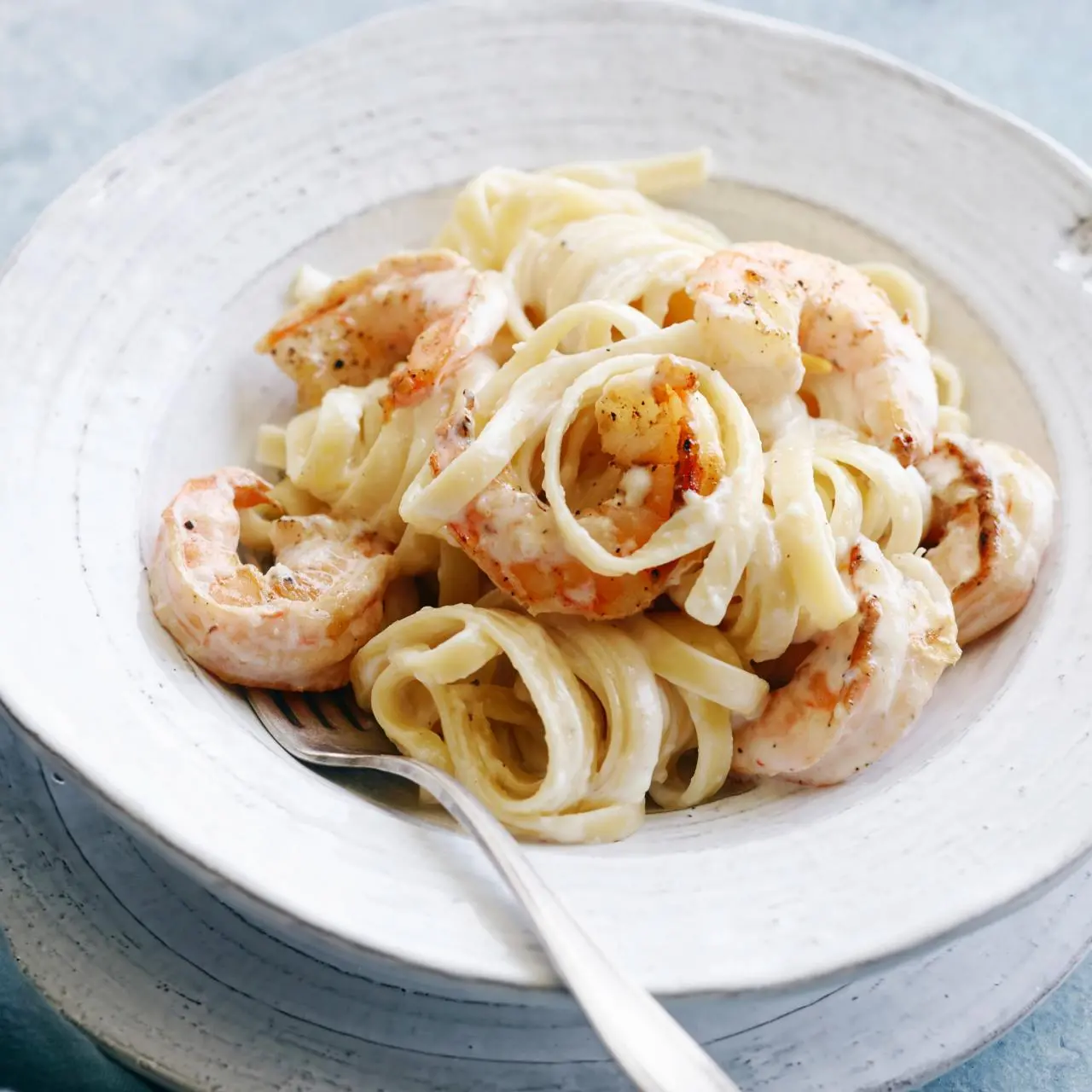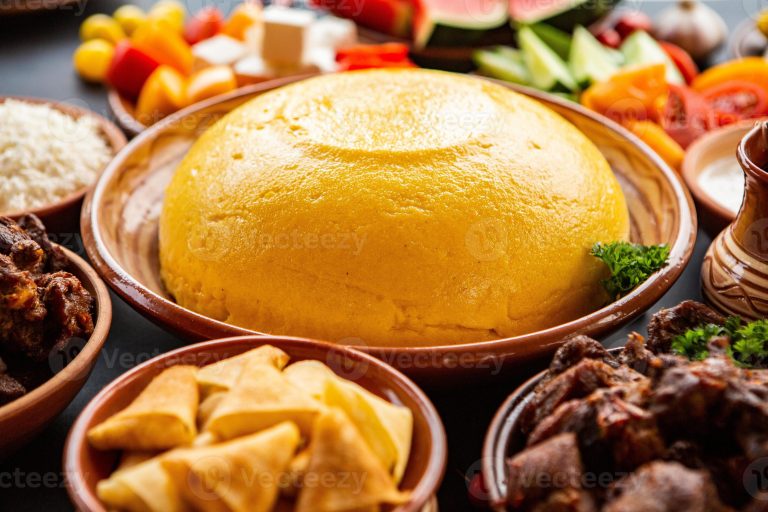Few pasta dishes have achieved the international recognition and beloved status of Fettuccine Alfredo. This seemingly simple combination of pasta, butter, and cheese has evolved into one of the most recognizable Italian-American dishes worldwide. Yet its history reveals a fascinating culinary divergence—a humble Roman creation that transformed into something entirely different when it crossed the Atlantic. The story of Fettuccine Alfredo takes us from a small restaurant in early 20th century Rome to the glamorous tables of Hollywood and eventually to chain restaurants across America, becoming a case study in how recipes transform as they travel between cultures.
What makes this dish’s evolution particularly interesting is the contrast between its Italian origins—where it remains a straightforward preparation of pasta with butter and cheese—and its American incarnation featuring heavy cream, garlic, and various additions that would be unrecognizable to its creator. This culinary evolution reflects broader patterns of how immigrant foods adapt to new environments, tastes, and available ingredients, often creating entirely new traditions in the process.
The Roman Origins: Alfredo di Lelio’s Creation
:max_bytes(150000):strip_icc()/shrimp-fettuccine-alfredo-recipe-5205738-hero-01-1a40571b0e3e4a17ab768b4d700c7836.jpg)
A Husband’s Loving Gesture
The story of Fettuccine Alfredo begins in 1908 in Rome, with a restaurateur named Alfredo di Lelio. According to well-documented accounts, Alfredo created the dish as a restorative meal for his wife, Ines, who was weakened after childbirth and experiencing difficulty maintaining an appetite. Drawing on the traditional Roman preparation of pasta al burro (pasta with butter), Alfredo enhanced the simple recipe by doubling the butter and using freshly made fettuccine.
The resulting dish—fettuccine tossed with abundant butter and freshly grated Parmigiano-Reggiano cheese—was both energy-dense and mild enough for his wife’s delicate condition. The key innovation wasn’t in the ingredients themselves, which were staples of Roman cooking, but in the preparation method: Alfredo added the cheese and butter to hot, freshly cooked pasta and tossed it thoroughly, creating an emulsified sauce that coated each strand of pasta.
From Family Recipe to Restaurant Signature
What began as a personal recipe soon found its way onto the menu at Alfredo’s restaurant in Via della Scrofa in central Rome. Alfredo di Lelio had a flair for showmanship that would play a crucial role in his dish’s fame. He prepared the fettuccine tableside with dramatic flourish, using golden utensils and tossing the pasta with theatrical expertise to create the creamy emulsion of butter and cheese before the delighted eyes of his patrons.
Hollywood Discovers Alfredo: The American Connection
Silent Film Stars Spread the Word
The transformation of Fettuccine Alfredo from local Roman specialty to international sensation can be traced to a specific visit in 1920. Silent film stars Mary Pickford and Douglas Fairbanks, Hollywood’s premier power couple of the era, were honeymooning in Rome and dined at Alfredo’s restaurant. Completely enchanted by the dish and Alfredo’s theatrical preparation, they became instant devotees.
Before leaving, the couple presented Alfredo with a golden fork and spoon engraved with the inscription, “To Alfredo, the King of the Noodles.” More importantly, they brought their enthusiasm for the dish back to Hollywood, spreading word among the American cultural elite and establishing Alfredo’s restaurant as a must-visit destination for Americans in Rome.
The Golden Utensils: A Symbol of Transatlantic Fame
The golden utensils gifted by Pickford and Fairbanks became more than just elegant serving tools—they evolved into powerful marketing symbols. Alfredo prominently displayed these implements in his restaurant and used them in his tableside preparation, adding to the theatrical experience. The golden utensils became part of the lore surrounding the dish, tangible evidence of its Hollywood connection that attracted even more American visitors.
This golden fork and spoon would later become subjects of controversy when the original restaurant was sold, with competing establishments claiming to be the true inheritors of Alfredo’s legacy. Today, these utensils remain powerful symbols in the competing restaurants that claim to be the authentic home of Fettuccine Alfredo in Rome.
The Americanization: How Fettuccine Alfredo Transformed Abroad
Adding Cream: The Fundamental Divergence
The most significant transformation in Fettuccine Alfredo’s evolution occurred when American chefs began recreating the dish. In Italy, the creaminess of authentic Fettuccine Alfredo comes entirely from the emulsion of starchy pasta water, butter, and cheese—no actual cream is used. However, American interpretations began incorporating heavy cream into the recipe, fundamentally changing its character.
Several factors contributed to this adaptation:
- The difficulty of creating the proper emulsion without Alfredo’s practiced technique
- Different protein contents in American flours affecting the pasta’s starch release
- The lower fat content of American butter compared to Italian varieties
- American preference for saucier pasta dishes
The addition of cream made the sauce more foolproof and aligned it with American preferences for richer, more abundant sauces. This modification became so standard in American preparations that many Americans are surprised to learn the original Italian version contains no cream at all.
Expanding the Ingredient List
Once cream became a standard ingredient in American Fettuccine Alfredo, the door opened to further adaptations. American versions commonly added:
- Garlic, which is absent in the Roman original
- Nutmeg or other spices
- Black pepper
- Eggs to enrich the sauce further
- Various proteins like chicken, shrimp, or bacon
- Vegetables like peas, mushrooms, or broccoli
These additions transformed the dish from its pure, simple Roman origins into something more akin to what Americans expected from Italian food—abundant, highly flavored, and protein-rich. By the 1960s, the American version of Fettuccine Alfredo had diverged so significantly from its inspiration that they could almost be considered different dishes entirely.
Commercialization and Mass Market Appeal
The final stage in Fettuccine Alfredo’s American transformation came with its commercialization. By the 1980s and 1990s, the dish had become a staple at Italian-American chain restaurants like Olive Garden, where it was often one of the most popular menu items. Food manufacturers began producing jarred Alfredo sauces for home use, further cementing the cream-based version in American culinary consciousness.
This mass-market appeal coincided with nutritional concerns about the dish’s high fat content. Fettuccine Alfredo became somewhat infamous as a dietary indulgence, sometimes jokingly referred to as a “heart attack on a plate.” This reputation spawned countless “lighter” versions attempting to maintain the creamy texture and rich flavor while reducing calories and fat—something that would have been puzzling to Alfredo di Lelio, whose original dish, while butter-rich, was actually more moderate in its overall composition.
Culinary Divergence: Two Distinct Traditions
The Dish in Modern Italy
The fascinating paradox of Fettuccine Alfredo is that while it achieved iconic status internationally, it remained relatively obscure in its homeland. Outside the specific restaurants claiming Alfredo’s legacy, the dish is rarely found on menus in Italy. When Italians prepare something similar at home, they typically call it “pasta al burro” or “pasta in bianco”—simple butter and cheese pasta often prepared for children or those with upset stomachs.
The two restaurants in Rome that claim to be the legitimate heirs to Alfredo’s legacy—”Il Vero Alfredo” and “Alfredo alla Scrofa” (resulting from a family split and business sale)—continue to serve the original version and cater largely to tourists seeking the authentic experience. Each claims possession of the “real” golden utensils and Alfredo’s original recipe.
For most Italians, the American version of Fettuccine Alfredo with its cream and additional ingredients represents a prime example of how Italian dishes have been transformed abroad, often cited alongside deep-dish pizza and spaghetti with meatballs as Italian-American innovations rather than authentic Italian cuisine.
The American Institution
In America, Fettuccine Alfredo continues to hold its place as a beloved comfort food and restaurant staple. The cream-based version has become so established that it now represents its own legitimate culinary tradition. Many chefs have created signature versions, and the basic Alfredo sauce concept has expanded beyond fettuccine to appear with different pasta shapes, in casseroles, and even as a pizza topping.
The dish’s enduring popularity has also made it a target for culinary reinvention, with modern chefs creating versions that range from health-conscious adaptations using Greek yogurt or cauliflower purées to gourmet reinterpretations incorporating truffle oil or aged cheeses.
Recipe Archaeology: Recreating the Original
The Authentic Roman Technique
For those interested in experiencing something closer to Alfredo’s original creation, the technique is surprisingly simple yet requires attention to detail:
- Fresh egg fettuccine is essential—the higher protein content and rougher texture of fresh pasta helps create the proper emulsion.
- The pasta should be cooked in well-salted water until truly al dente.
- High-quality European-style butter with at least 82% fat content is crucial.
- Genuine aged Parmigiano-Reggiano cheese, freshly grated, provides the proper flavor and melting properties.
- A small amount of starchy pasta cooking water is reserved before draining.
- The hot pasta is tossed with softened butter, then cheese is gradually incorporated with small amounts of the reserved cooking water.
- Continuous tossing and stirring creates the emulsion that coats each strand of pasta.
No cream, no garlic, no additional seasonings beyond perhaps a light grating of nutmeg—the original relies entirely on three quality ingredients and proper technique.
The Key to Authenticity: Quality of Ingredients
Both the original Roman version and even the best American adaptations rely heavily on ingredient quality. The significant difference in taste between mass-produced, shelf-stable Alfredo sauce and either authentic tradition comes down to using fresh, high-quality components:
- Artisanal pasta with sufficient protein content
- Cultured butter with high butterfat percentage
- Freshly grated aged cheese rather than pre-packaged varieties
- For American versions, fresh heavy cream rather than thickener-stabilized commercial products
Conclusion: A Dish That Bridges Culinary Worlds
The story of Fettuccine Alfredo illustrates how recipes transform as they travel across cultures, sometimes creating entirely new traditions that become legitimate culinary expressions in their own right. Neither the Italian original nor the American adaptation can claim absolute authenticity—they represent different but equally valid culinary expressions shaped by cultural context, ingredient availability, and evolving tastes.
What began as a husband’s loving creation for his wife in a small Roman restaurant became an international bosjoko phenomenon through a chance celebrity encounter. The dish then underwent a remarkable transformation that reflects broader patterns of how immigrant foods adapt and evolve in new environments. Both versions—the simple Roman butter-and-cheese original and the creamy American adaptation—continue to delight diners, though in vastly different ways.
Perhaps the most appropriate way to view Fettuccine Alfredo is not as a single dish that has been “corrupted” or “improved,” but as a culinary idea that has given rise to two distinct and legitimate traditions. In this sense, it serves as a delicious reminder of how food evolves as it travels, carrying traces of its origins while adapting to new homes—much like the immigrants who bring their culinary heritage with them when they cross oceans and borders, creating new traditions that honor the past while embracing the future.




















